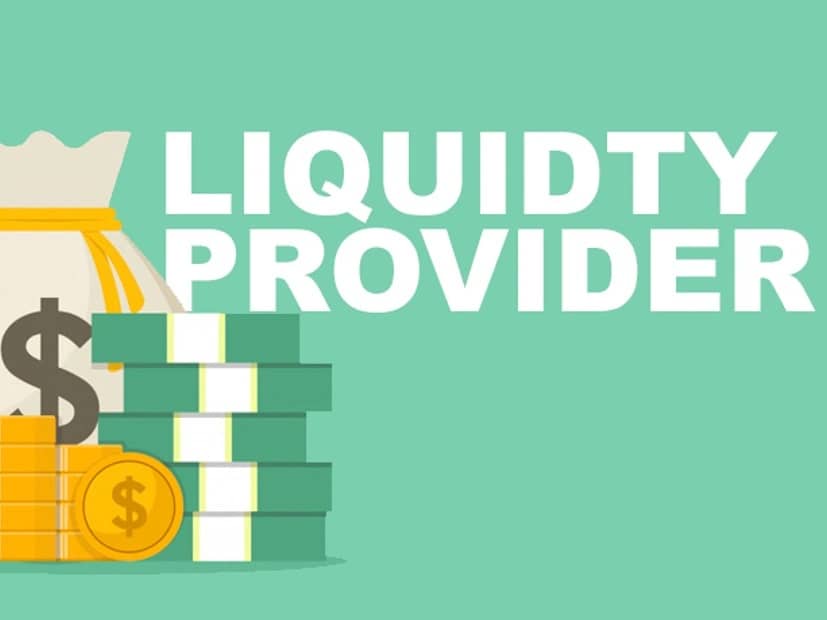위키 구독하기
Share wiki
Bookmark
Liquidity Providers
에이전트 토큰화 플랫폼 (ATP):에이전트 개발 키트(ADK)로 자율 에이전트 구축
Liquidity Providers
암호화폐(https://iq.wiki/wiki/cryptocurrency) 및 탈중앙화 금융(DeFi, Decentralized Finance) 업계에서 **유동성 제공자(LPs, Liquidity Providers)**라는 용어는 탈중앙화 거래소(DEX, Decentralized Exchange) 사용자 중 자신이 소유한 암호화폐 자산으로 유동성 풀에 자금을 조달하는 사람들을 가리킵니다.[1] [3]
암호화폐 자산은 자동화 시장 조성자 (AMMs, Automated Market Makers) 예를 들어 Uniswap, SushiSwap, MindSwap과 같은 곳에서 거래를 용이하게 하는 데 사용됩니다. 유동성 제공자는 종종 두 가지 이상의 토큰을 제공하며 예치금에 대한 수동적 소득을 얻습니다.[2] [4]
Trivia
- 자금을 제공하는 대가로 사용자는 유동성 풀에서 발생하는 거래 수수료를 총 유동성에서 차지하는 비율에 따라 얻습니다.
- 유동성을 제공하는 사용자는 스마트 계약 위험과 일시적 손실을 염두에 두어야 합니다.[5]
- 누구나 유동성 제공자가 될 수 있으므로 AMM은 시장 조성을 더욱 접근 가능하게 만들었습니다. [6]
소개
사용자가 유동성 풀에 자금을 조달할 때, 일반적으로 거래자가 한 자산에서 다른 자산으로 전환할 수 있도록 두 가지 다른 자산을 조달해야 합니다. [7]
DeFi의 유동성 풀
유동성 풀은 자동화된 시장 조성자 기반 시스템을 사용하는 탈중앙화 거래소에서 유동성이 낮은 거래 쌍을 제한된 슬리피지로 거래할 수 있도록 활용됩니다. 기존의 주문서 기반 거래 시스템을 사용하는 대신, 이러한 거래소는 모든 거래 쌍의 모든 자산에 대해 보유되는 자금을 사용하여 거래를 실행합니다. [8]
주문서 기반 거래소에서 유동성이 낮은 거래 쌍을 거래하면 큰 슬리피지와 거래 실행 불가능성으로 이어질 수 있지만, 유동성 제공자의 장점은 유동성 풀이 충분히 크다면 항상 거래를 실행할 수 있다는 것입니다. [9]
Ethereum에서 유동성 풀을 사용하는 다른 인기 있는 거래소로는 Curve Finance와 Balancer가 있습니다. 이러한 프로토콜의 유동성 풀에는 ERC-20 토큰이 포함되어 있습니다. Binance Smart Chain (BSC)의 유사한 대응물로는 PancakeSwap, BakerySwap (BAKE) 및 BurgerSwap이 있으며, 이곳의 풀에는 BEP-20 토큰이 포함되어 있습니다. [11]
유동성 풀링은 수익 농사(Yield Farming) 또는 유동성 마이닝과 같은 여러 가지 방법으로 사용할 수 있습니다. 유동성 풀은 yEarn과 같은 자동 수익 생성 플랫폼의 기반이며, 사용자는 자금을 풀에 추가하면 수익을 창출하는 데 사용됩니다. [12]
사용자가 Uniswap에 유동성을 제공하거나 Compound에 자금을 대출하면 풀에서의 지분을 나타내는 토큰으로 보상받습니다. 사용자는 해당 토큰을 다른 풀에 예치하여 수익을 얻을 수도 있습니다. 프로토콜이 다른 프로토콜의 풀 토큰을 자체 제품에 통합하는 등 프로토콜이 다른 프로토콜과 통합됨에 따라 이러한 체인은 매우 복잡해질 수 있습니다. [13]
유동성 제공자 예시
유동성 제공자는 두 자산 간의 상호 거래를 허용하기 위해 5,000달러 상당의 (ETH)와 5,000달러 상당의 DAI를 유동성 풀에 제공할 수 있습니다. ETH/DAI 유동성 풀에서 거래가 실행될 때마다 해당 유동성 제공자는 해당 풀에 자금을 조달한 것에 대한 보상을 받게 됩니다. [10]
유동성 제공자(LP) 토큰
유동성 제공자가 DEX의 유동성 풀에 성공적으로 유동성을 제공하면 영수증으로 유동성 제공자 토큰 또는 LP 토큰을 받게 되며, 이를 통해 원래 지분과 발생한 이자를 청구할 수 있습니다. 이러한 LP 토큰은 풀에서 해당 유동성에 대한 소유권을 나타냅니다. LP 토큰은 유동성 풀에 대한 개별 기여를 추적하며 전체 풀에서 유동성의 비율에 비례합니다. 이러한 LP 토큰은 수익 농사, 대출 담보 및 기타 여러 목적으로 추가로 사용할 수 있습니다.
[14][15]
잘못된 내용이 있나요?
